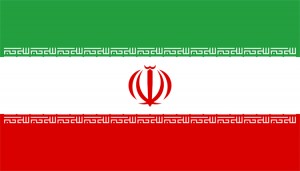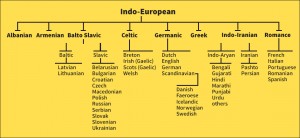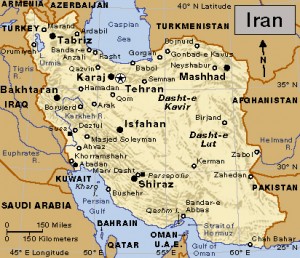Language Monday: Persian
Monday, July 16th, 2018July 16, 2018
Persian, the official language of Iran, is called Farsi by its native Iranian speakers. The word Persian is often used by people outside of Iran to refer to this language. Accordingly, the word Persia itself comes from an outsider’s name (the Greek word Persis) for the historical Iranian region. The Persian language is written in a slightly modified Arabic script. The word Farsi looks like this: فارسی.

The Iranian flag flies over more than 80 million Farsi speakers. The inscription God Is Greatest appears in stylized Arabic 11 times on both the green stripe and the red stripe of the flag. The white stripe bears the coat of arms, which is the word Allah. Credit: © Grebeshkov Maxim, Shutterstock
Ancient Persia was centered in part of what is now the countries of Iran and Afghanistan. Thousands of years ago, the Persian Empire came to rule most of southwestern Asia and parts of Europe and Africa. The ancient Persians spoke a language they called Aryan (now usually called Old Persian). Aryan is also the name of Iran’s dominant ethnic group. Indeed, the name Iran means Land of the Aryans. About 2,500 years ago, Old Persian was first written in the Cuneiform script. By about A.D. 250, Persian scribes were using an Aramaic script. By A.D. 400, the people spoke Middle Persian, or Pahlavi. Scholars developed an advanced alphabet of 48 letters, each representing a different sound. In the mid-600’s, however, Muslim Arabs conquered what is now Iran and imposed their religion and form of writing.
Modern Persian belongs to the extensive Indo-European family of languages, to which belong nearly all the languages of Europe and many of the languages of southern and southwestern Asia. The commonalities of such languages become apparent in the origins of a number of words. For example, the English word mother is madre in Spanish and madder in Persian. Many similarities also exist between Old Persian and Sanskrit, the mother tongue of many modern languages of India. Persian shares much vocabulary with Arabic. Many modern and technical Persian terms are taken from English, French, and German.

Click to view larger image
Persian, or Farsi, is one of many Indo-European languages. Credit: WORLD BOOK diagram
The modern Persian alphabet has 32 letters, including 4 symbols that represent sounds not heard in Arabic. Like Arabic, Hebrew, and Urdu, Persian is written from right to left. Sentences are formed with a subject-object-verb structure. Verbs frequently appear as the last word in a sentence.
Though the Persian language uses Arabic script, there is no p sound in Arabic. The influence of Arabic rendered Persian p’s as f’s. Accordingly, the southwestern Iranian province of Pars—historically a center of Persian culture and learning—became rendered as Fars. The Iranian language was named for its origins in Pars, and the name Parsi was Arabicized as Farsi.
Today, Persian has a number of dialects—that is, distinct forms of the language spoken by certain population groups. Farsi—the official language of Iran—is the most widely spoken dialect. Persian dialects are also spoken in Afghanistan, Tajikistan, Uzbekistan, and parts of other southwestern Asian countries. Persian is also spoken in the United States, where Los Angeles in particular is a hub for Persian speakers. The Dari language in Afghanistan is quite similar to Persian and is understood in Iran. In Tajikistan, the people speak a variety of Persian called Tajik or Tajiki.
Linguists consider Persian not terribly difficult to learn. For instance, it has no articles (such as a, an, or the in English), and its nouns have no gender. However, it can take lots of practice to master the language’s frequent use of guttural (throat-formed) sounds, such as gh and kh. Speakers of Persian consider their language to be a sweet-sounding one that lends itself to song and recitations of poetry.
A number of Persian or Persian-influenced words are part of an English speaker’s everyday vocabulary, particularly when it comes to food. These words include candy, lemon, pistachio, saffron, soup, and spinach. New students of the Persian language may chuckle upon learning that barf falls from the sky in the mountains above Tehran! But the word simply means snow.



